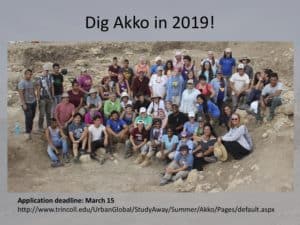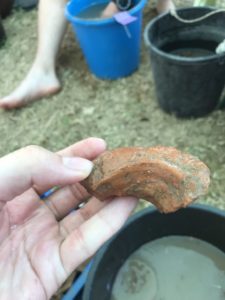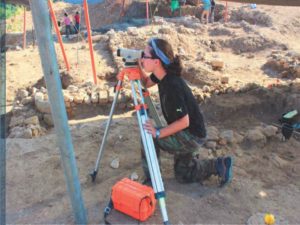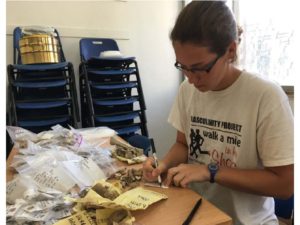Study Away/Summer Research
Classical Studies majors study abroad year-round and all over the world!

Every year, our students study abroad at programs around the world–including our summer program at the Tel Akko field school in Israel.
Students who participate in the Akko program document their impressions and experiences through blog posts like these, by Classical Studies majors Whitney Hall ’20 and Bryn Hudson ’21:
Whitney Hall ’20 on Perfectly Imperfect Pottery at Tel Akko
When I first began excavating I was told that one good way to tell pottery from rock was from the ridges on the inside. These ridges come from the artists fingertips as they shape the inside of the clay. I remembered the ceramics class I took in high school and the way that our fingers would make impressions in the clay as we molded it on the wheel, making it pretty recognizable.
Today most things, like glass bottles, and plates, are not handmade. This means that a lot of what we make today bears no personal touch. Because the pottery we found was made with hands, even if it was on a wheel, the artist leaves his or her own signature. A lot of this personalization can be seen in the pottery handles (photos attached).

A technique for making the curved handles on pots was to pull and stretch the clay into a curved shape. These handles differ from a lot of handles that we find that have perfectly smoothed handles. While these smoothed handles are more aesthetically pleasing, the more imperfect ones have more character. The artifacts that we find are from a time that was very different from the one we live in now. This can make it hard to connect with, as it is not from a way of living that we necessarily understand.
A lot of the pottery we find is broken as has been discarded, similar to the way that plastic is thrown away today. As we excavate for scientific purpose, we also take a more removed viewpoint. While we find lots of different artifacts on the tel that can be hard to connect with, I think that the more imperfect pottery is the artifact that I can connect with most. The imprints of the artist hands allow me to imagine just who made the artifacts that we excavate and wash.
Selections from Bryn Hudson’21 Tel Akko Diary:

A lavalier/dumpy level allows one to measure the heights of artefacts, rocks, walls, pits, floors, etc within a locus. Such information helps to track the excavation’s progress and to separate loci by date.

After the bones have been washed, they’re taken to the arch-zoology lab where their species is identified and they’re sorted by the square they were recovered from.

During the Ottoman Period, Sultan Al-Jazaar ruled his kingdom from Akko. While in power, he increased the Galilean economy and constructed many buildings, including this mosque which is an important site for Islamic pilgrims.
